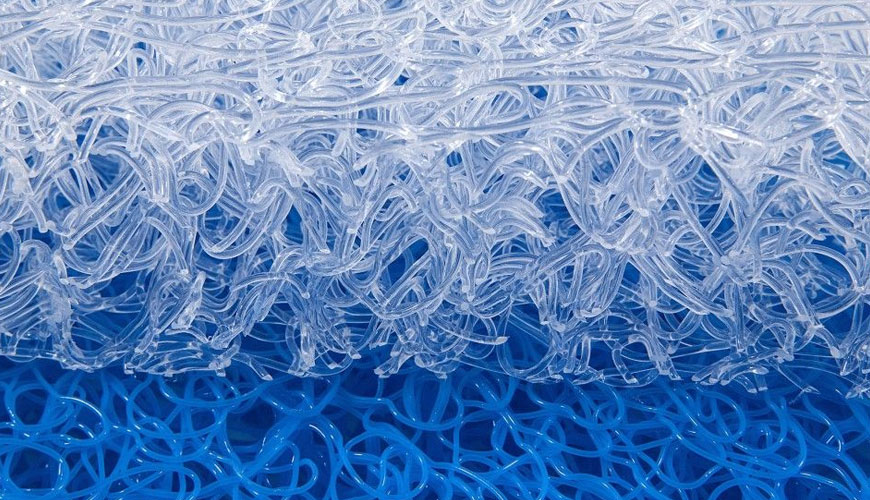

EUROLAB laboratory provides testing and compliance services within the scope of ISO 75-2 standard. The ISO 75-2 standard, developed by the International Organization for Standardization (ISO), specifies three methods using different values of constant bending stress that can be used to determine the bending temperature of plastics (including filled plastics and fiber-reinforced plastics) under load.

The three methods using different values in this standard are as follows:
The standard deviation, Δs, used to determine the bending temperature under load corresponds to a bending-strain increase (Δεf) defined in this part of ISO 75. The initial bending stress resulting from loading the specimen at room temperature is also not specified. nor is it measured in this part of ISO 75. The ratio of this flexural-strain increase to the initial flexural stress depends on the modulus of elasticity of the material under test at room temperature. Therefore, this method is only suitable for comparing the deflection temperatures of materials with similar room temperature elastic properties.
The methods provide better repeatability with amorphous plastics than with semicrystalline plastics. With some materials, test specimens may need to be annealed to obtain reliable results. Annealing procedures, if used, often result in an increase in deflection temperature under load.
Early versions of ISO 75-1 and this part of ISO 75 described three methods (A, B and C) using different test loads and two sample positions, edge and flat. For testing in the flat position, test specimens with dimensions of 80 mm × 10 mm × 4 mm were required. They can be molded directly or machined from the middle section of the multi-purpose test specimen.
Earlier (i.e. second) versions of ISO 75-1 and this part of ISO 75 specify the flat test position as preferred, while continuing to allow testing in the edge position with the test conditions given in Appendix A until the next ISO 75-1 revision. . and this part of ISO 61 as agreed in ISO/TC 2/SC5/WG 75. Therefore, with this revision, the test position in the edge direction will be removed.
The technical development of test equipment in recent years has made devices based on fluid bed or air furnaces available. They are particularly advantageous for use at temperatures where common silicone oil-based heat transfer fluids reach their thermal stability limits. Fluidized bed and air furnace heat transfer methods are introduced in ISO 75-1. An additional precision statement covering new heating methods is provided in this part of ISO 75.
Among the services provided by our organization within the framework of material testing services, there are also ISO 75-2 standard tests. Do not hesitate to contact our laboratory EUROLAB for your testing and certification requests.
To get an appointment, to get more detailed information or to request an evaluation, you can ask us to fill in our form and reach you.